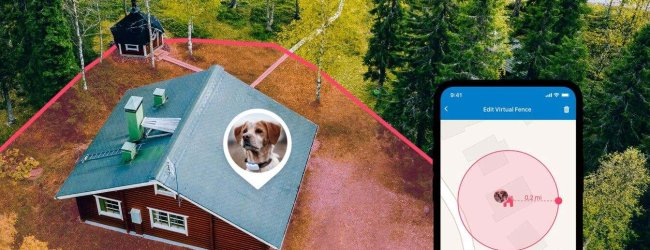8 Steps To Safely Walk Your Dog In The Dark
Both you & your buddy love your daily walks together - but how do you keep them safe when it's dark outdoors? Here are a couple of safety tips to get you started - plus how to find your dog in no time, in case they get lost.
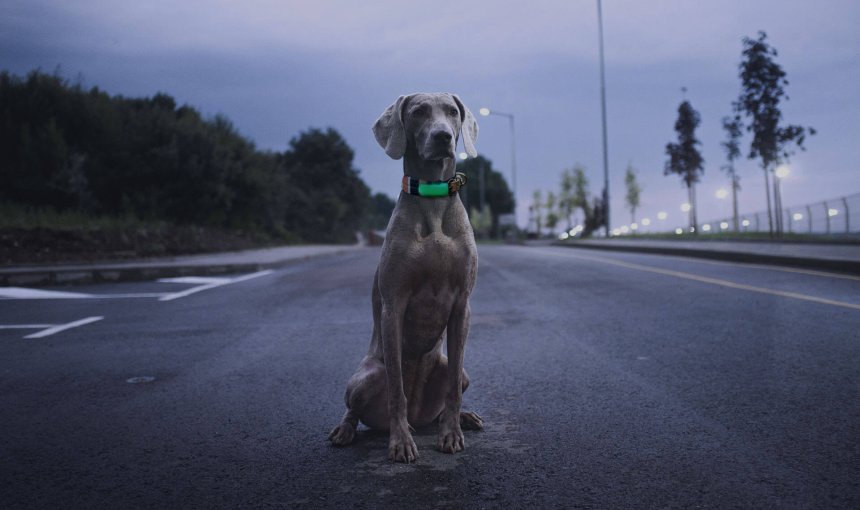
As fall gets closer, you might’ve wondered how to continue your daily dog walk routine as the days start getting shorter – and darker. After all, walking a dog in the dark means it’s that much easier to lose them if they slip off-leash at night! (Not to mention the nightmare of either of you end up getting hit by a driver or cyclist who can’t see you…)
Besides, there’s also wildlife, dangerous walking paths, and your dog’s special needs to consider. Especially if they’re a bit flighty, endlessly curious, young, untrained, or just a ball of energy that’s ready to run off in the dark to investigate some sight, sound, or smell.
But not to fear; with a little preparation and smart thinking, it’s 100% possible to safely walk your dog safely in the dark – whether that’s at nighttime or whenever the sun sets. (Which could be as early as 2-4 PM depending on where you live!) Plus, how to track down a missing dog in the dark with 100% peace of mind – every time.

Find out how your dog spends their time.
Read more10 Tips for walking your dog in the dark
1. Make sure your dog is easy to identify
Having a dog ID tag with a collar isn’t just a nice to have. Rather, it might be a legal requirement, depending on where you live.
Why? Because in a lost dog situation, they can potentially save your buddy’s life by ensuring a helpful stranger knows to return them to you. The last thing you want is to lose your dog in the darkness and then have no way to be reunited with them again!
“Only 15% of lost dogs without ID tags or microchip are reunited with their family.”
– American Humane
So before you head out on a walk, make sure your buddy has:
- An ID tag on their collar, with your dog’s name and your phone number clearly legible,
- Ideally, a dog microchip implanted by a vet, with up-to-date contact details in the microchip database.
Read more: The Pet Lover’s Guide to Dog Microchipping
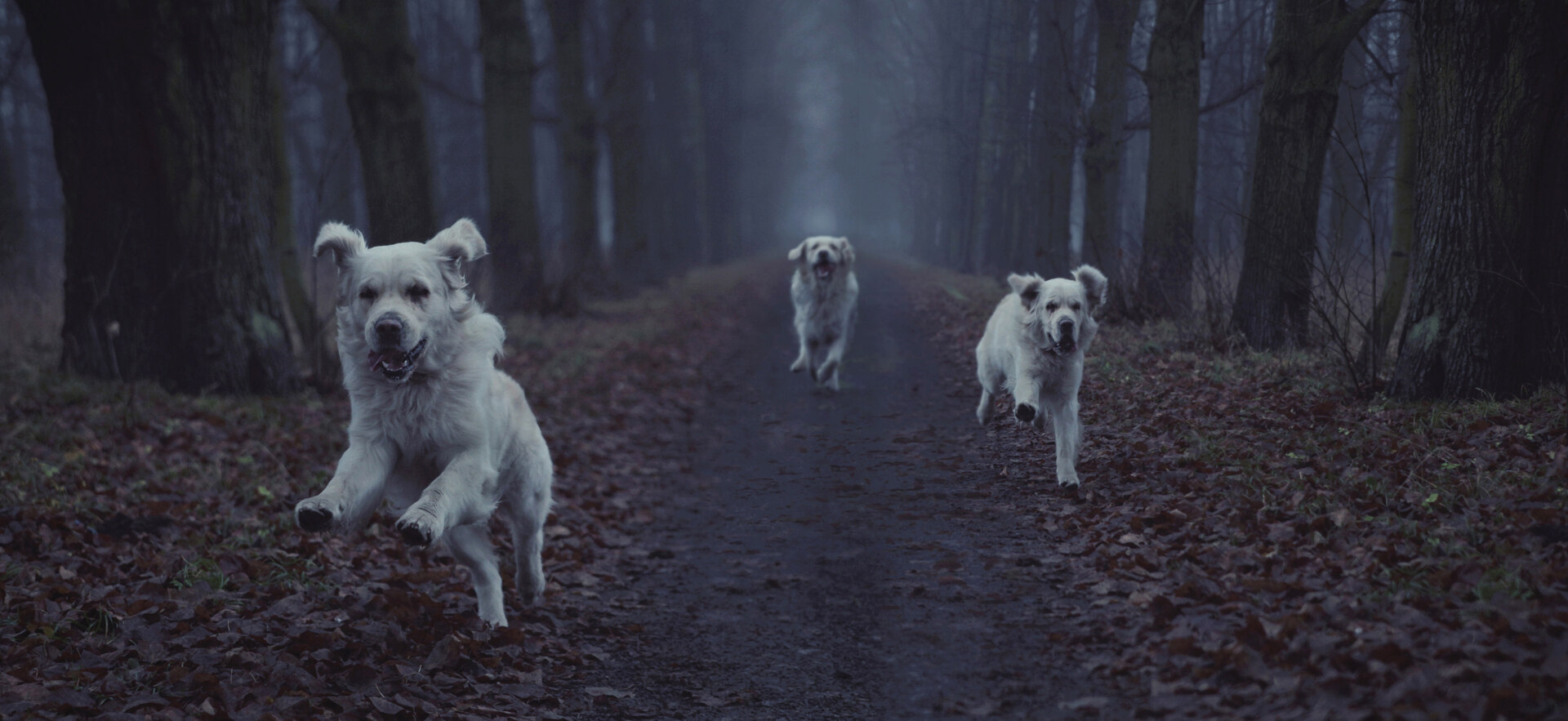
⚠️ Just remember: A microchip can’t actually help you FIND your lost dog.
- Rather, microchips only provides a form of identification in case your dog is lost and someone finds them again.
- Meaning, you’ll have to rely on the goodwill of strangers to pick up your dog, check them for an ID tag, get them to a vet who can scan their microchip – and then contact you.
Which, in a world where dognapping exists, is never a 100% guarantee!
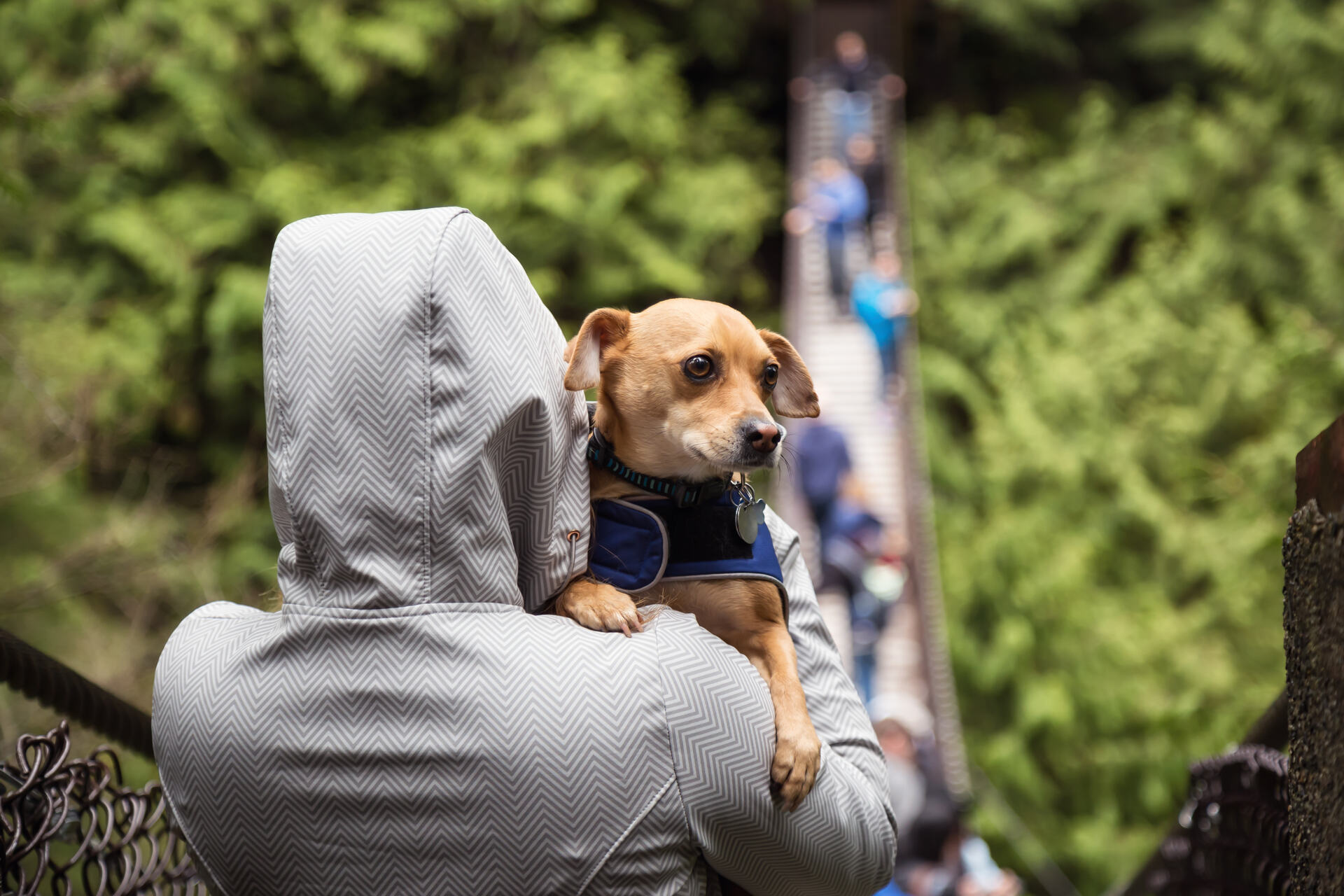
So if you’re relying on a microchip alone, just keep in mind that you can’t actually track your dog:
- In real-time,
- Over an unlimited range,
- Over a Heat Map of what spots on your walking path your dog spends most of their time,
- If your dog escapes a “safe zone” around your home or backyard
💡Rather, if your dog is a bit of an escape artist, an Energizer Bunny on the loose, on the younger side, still in progress with their recall training, or some combination thereof…
Then you’re better off strapping a GPS dog tracker to their collars.
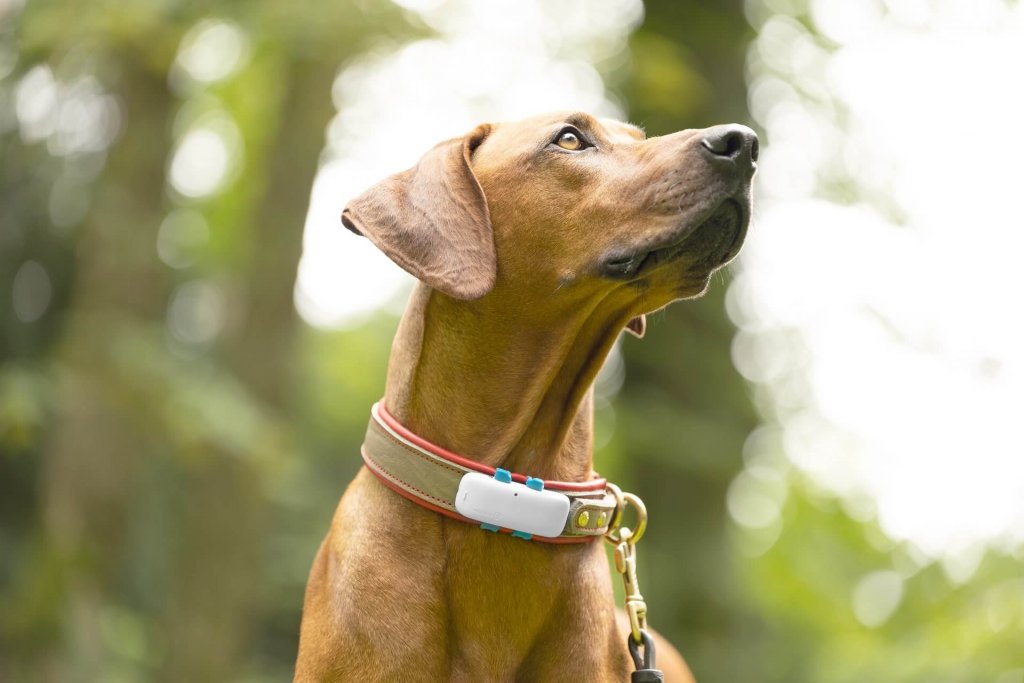
🐶 Which, in the case of millions of happy pet parents around the world, can make all the difference between locating your dog safe and sound…or potentially never seeing them again.
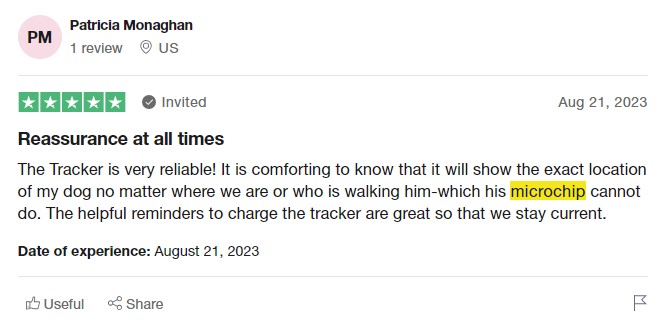
2. Consider getting your dog fixed
Got a dog around 6 months old that hasn’t gotten the snip or spay yet? It’s a good idea to bring up with your vet and get them fixed before taking them out on walks.
Why? Well, simply put, un-neutered male dogs or female dogs in heat are way more likely to try to run away than neutered pets. A dog following their strong natural mating instinct will be ready to chase any opportunity they get for a little action!
Read more: Dealing With A Neutered Dog: The Facts & The Fairytales
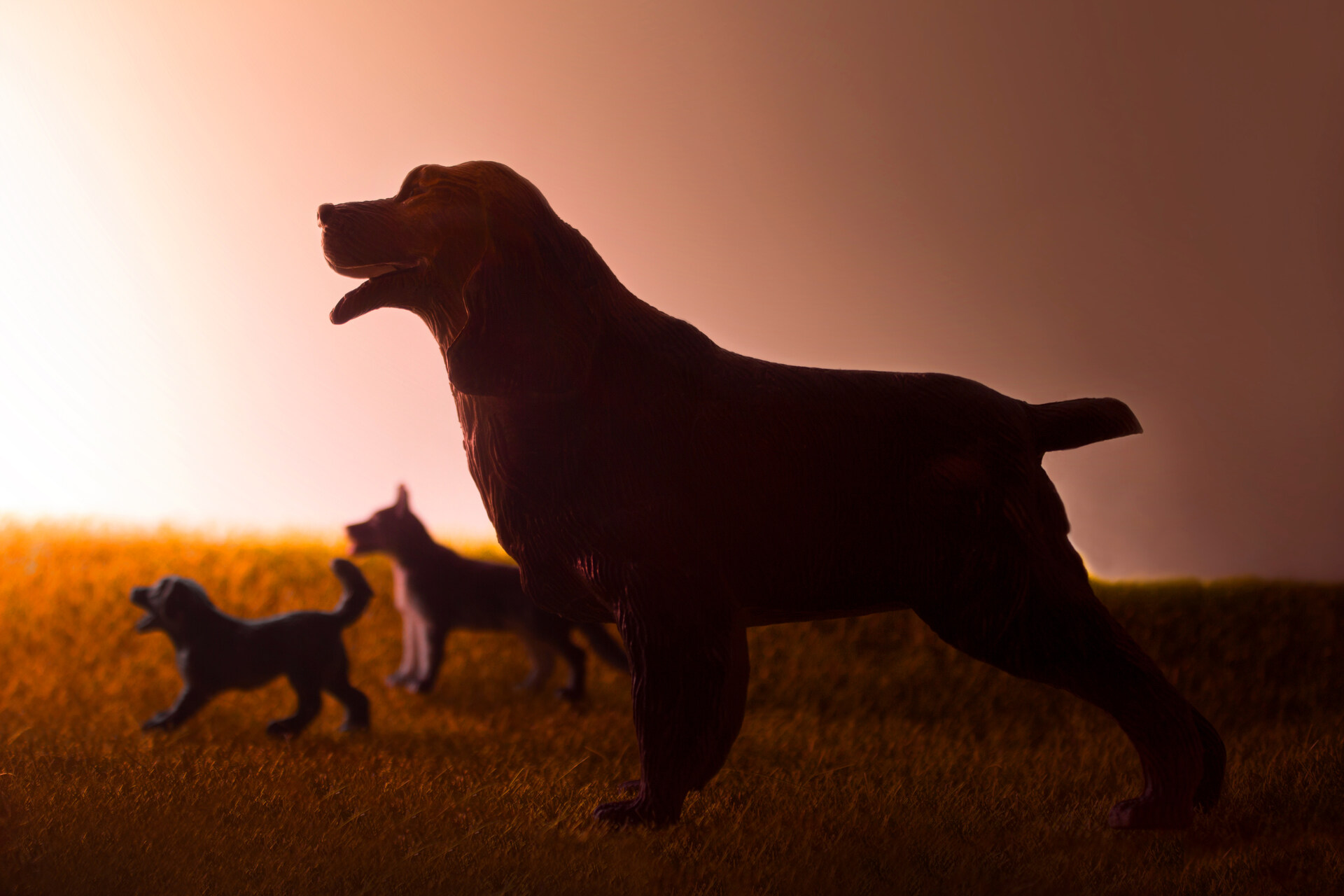
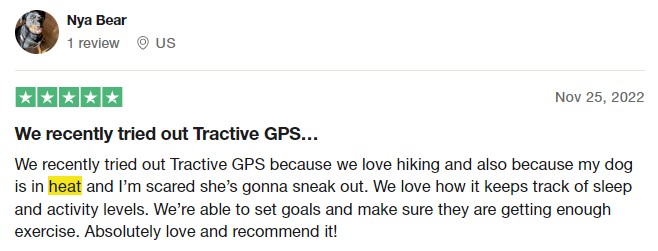
Got a spaying or neutering appointment in a few weeks – but still want to take your buddy out on daily walks? Make sure you…
3. Invest in an extra-strong leash & harness
For most people, walking the dog at night means walking the dog on the leash. Whether you want to keep your curious puppy from running away, or your old dog from wandering off, or you just want to respect passersby by keeping your dog in line, make sure to bring the leash on your nighttime dog walks.
In many areas, leash laws require that you walk your dog on a lead. Elsewhere, you might also need to check if your dog needs a muzzle.
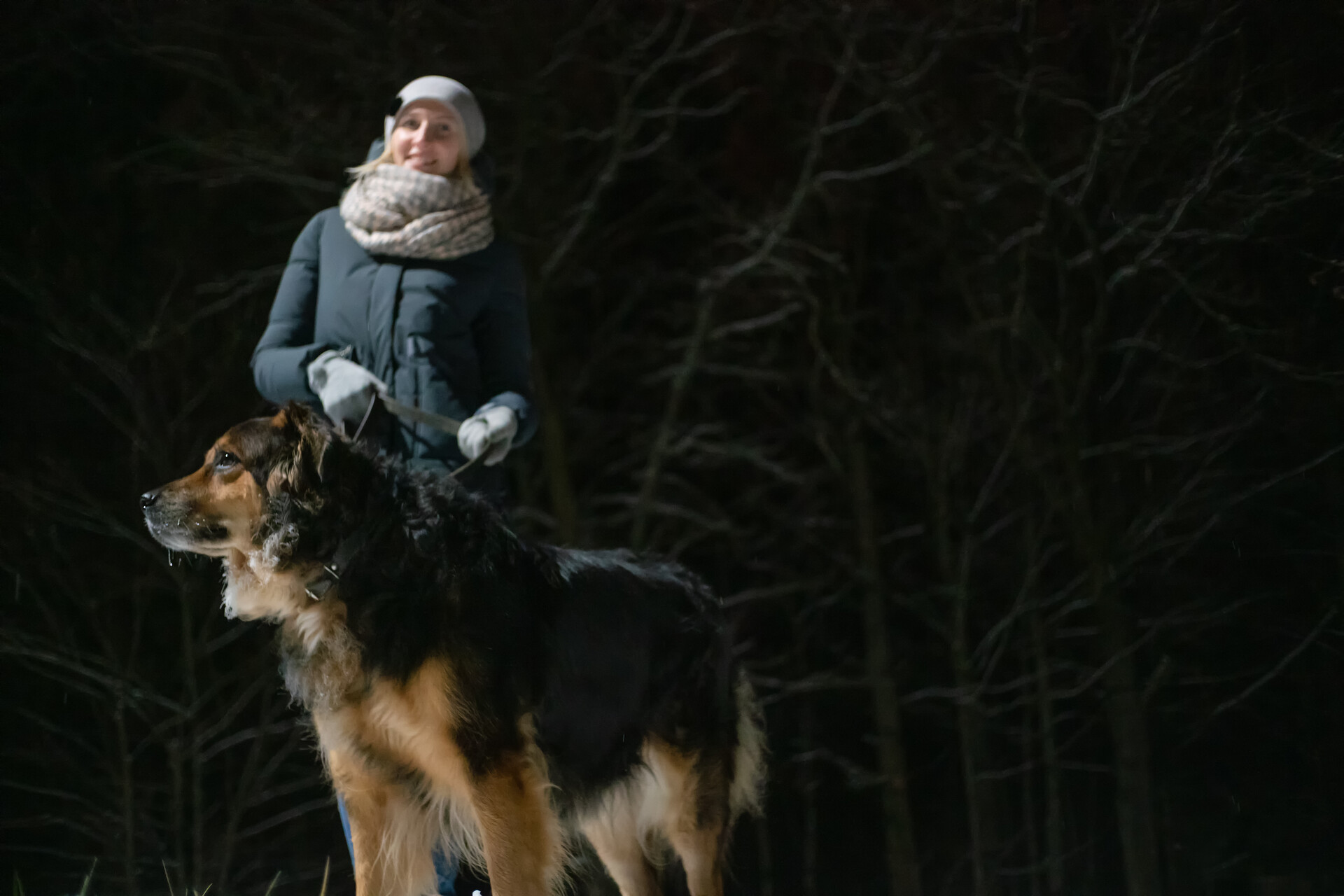
Of course, if you know of an area where it’s safe to walk your dog off leash, that’s fine too.
⚠️Because if they ever do bolt the leash, or run off a bit too far from safety – or outside your line of sight into the dark undergrowth…
…just hit “LIVE” on your Tractive device – and track them down in no time.
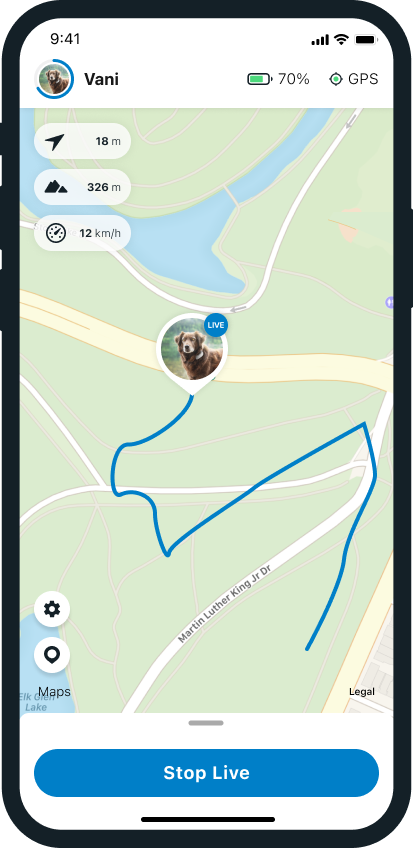
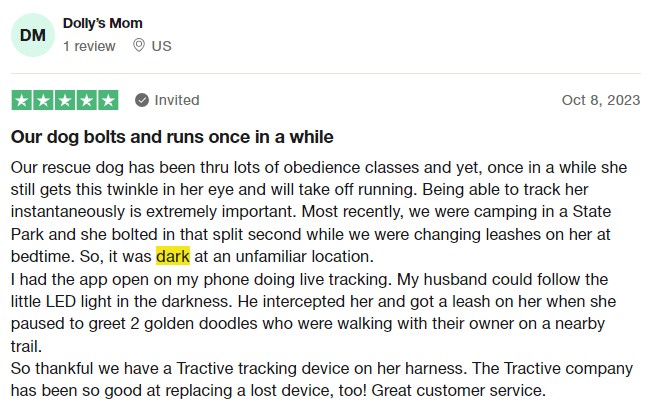
4. Don’t skip out on basic obedience training
No matter how much of a good boy or good girl they are, there’s no substitute for regular basic obedience training for your dog. It might seem tedious practicing “Stay,” “Come back,” and “Drop it” nearly every day – but it can make all the difference when you’re both out on a walk in the dark.
How come? Well, as it turns out, even the best-trained dogs can fall prey to their own flight instinct.
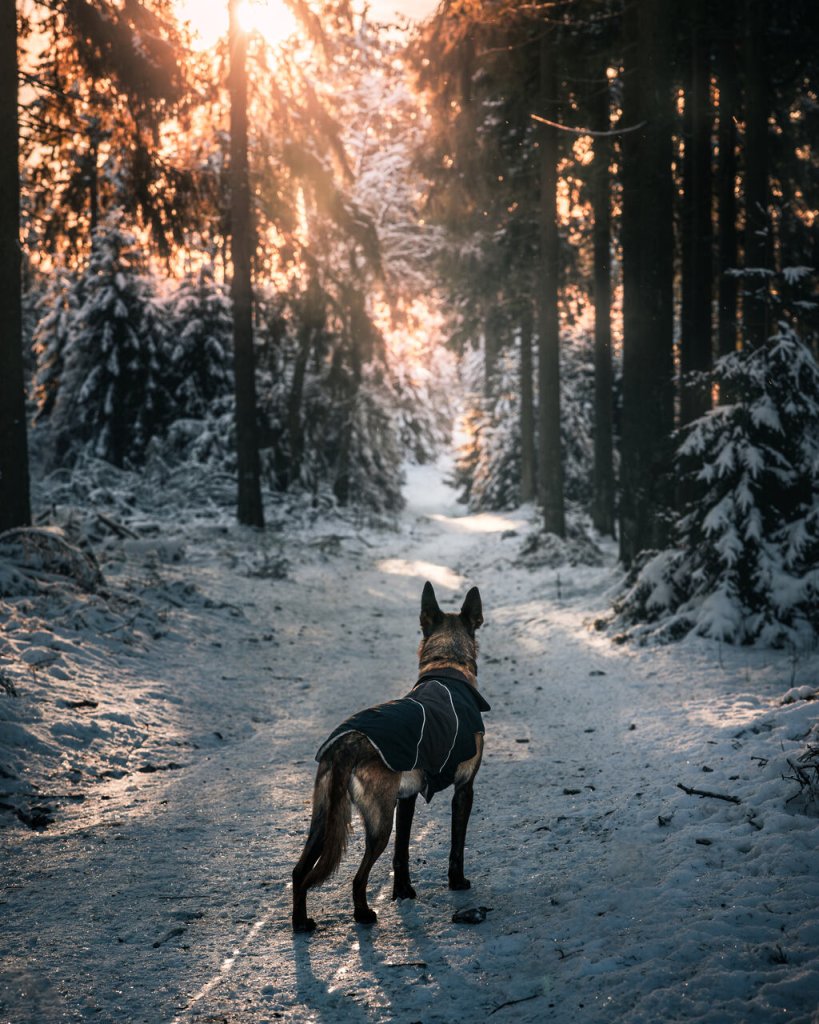
So on a nighttime walk, you want to avoid them yanking against the leash at every second to:
- Chase down a woodland animal – especially if they already have a high prey drive
- Explore some far-off water body, especially if they love to swim
- Go digging in some fresh, far-off patch of woodland
- Get some extra treats from a far-off campsite barbecue they’ve sniffed out
- Show another dog or wild animal who’s boss, which could result in your buddy running into deer, wolves, bears, or worst of all…skunks.
Whether you work with a dog training professional, or do it yourself, your time and energy will pay off when your canine pal can walk with you peacefully. (And avoid any nighttime misadventures down the line!)
5. Dress for visibility
Low visibility at nighttime isn’t just annoying – it can be life-threatening. (Especially if your walking route includes passing cars, animal traps, or wildlife.) So it’s important that both you and your dog are visible to passersby to avoid any accidents in poorly-lit areas.
Here are some visibility gear ideas for walking your dog at night:
- Use reflective gear. This goes for you and your dog. Reflective dog scarves, collars, harnesses, leashes, vests, jackets and more are available. Reflective gear is anything that reflects light, increasing the visibility of you and your furry friend.
- Lights. Try a LED or light up dog collar and/or leash, and bring a flashlight or headlamp with you. This is especially important if you go walking in a dark area.
- Glow-in-the-dark items, like the Tractive GPS Dog Tracker glow-in-the-dark sleeve or a glow-in-the-dark dog toy.
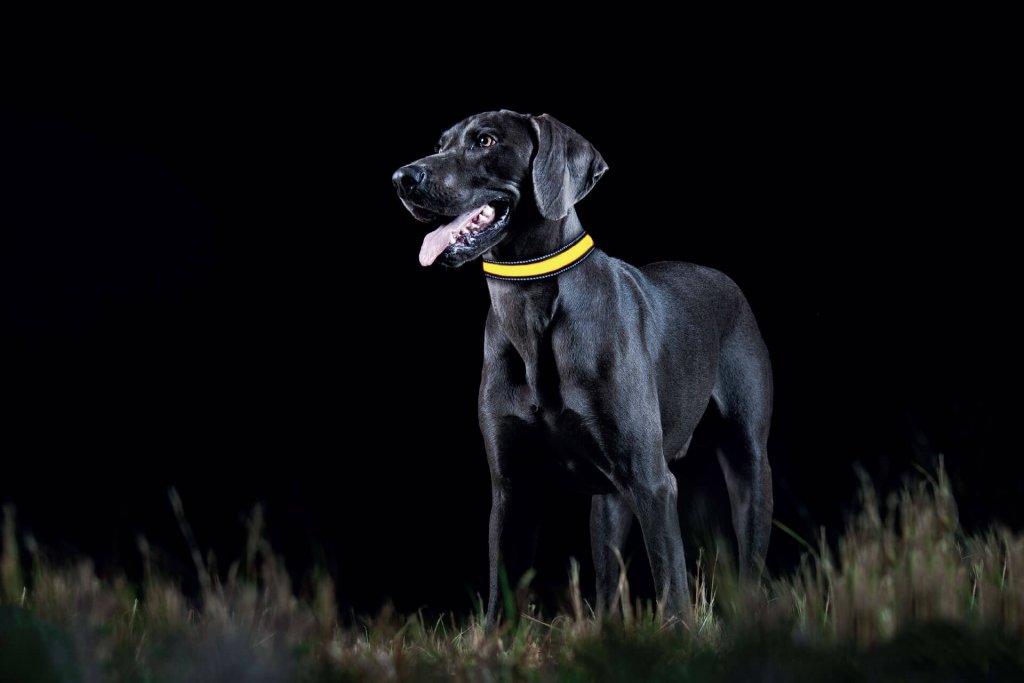
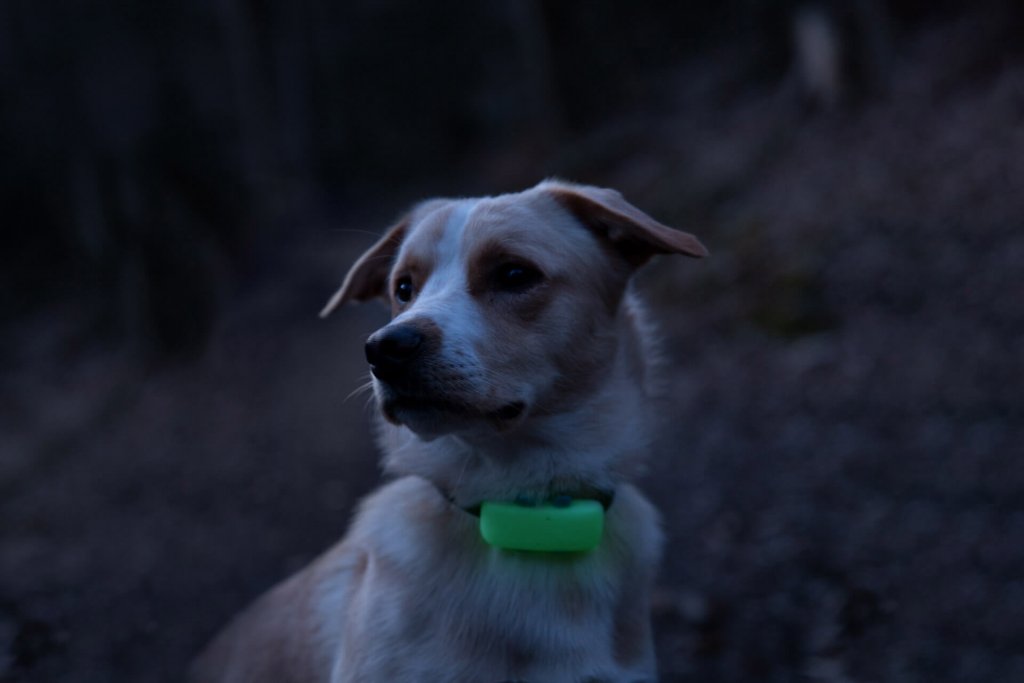
💡Your trusty Tractive device also comes with a built-in LED light to help you locate your dog visually on a dark evening – especially if your buddy’s fur is on the darker side.
Else, you could try the “Sound” option instead – to trigger a high-pitched melody that’ll help you find your dog in the dark.
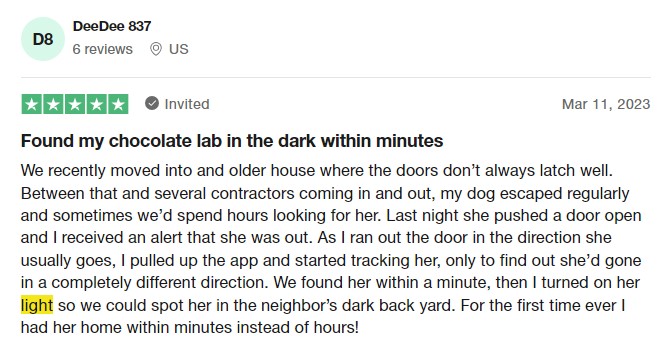
6. Plan for the weather
For example, if you have a small dog that gets cold easily, consider a warm dog jacket or insulating vest on frosty winter nights. Make sure you’re dressed warmly while you’re at it.
If you’re walking in a wet, muddy, or rocky area, consider getting your buddy a pair of dog booties to keep their paws warm, dry, and safe.
Read more: 8 Best Tips On How To Protect Dog Paws In Snow
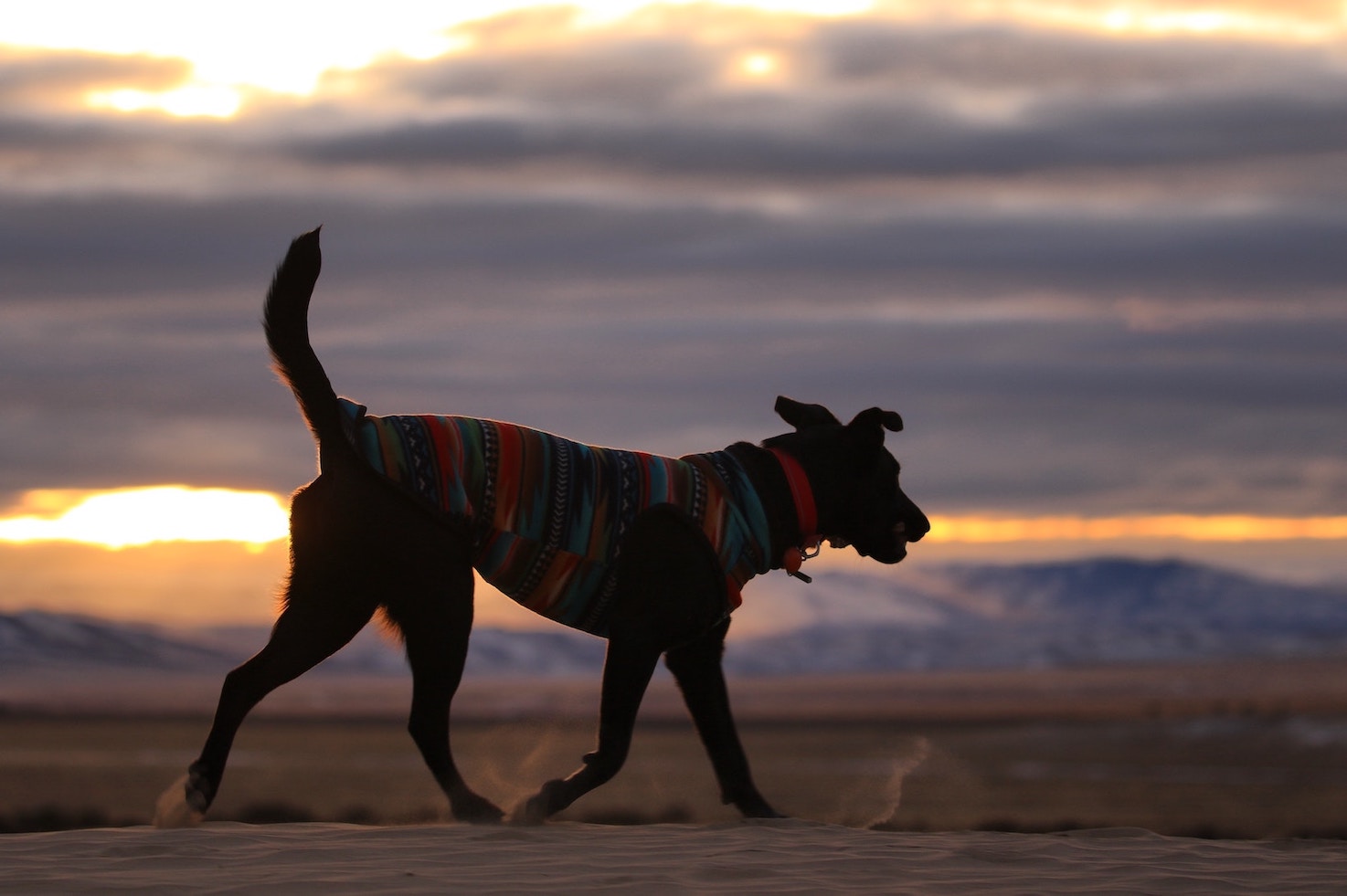
⚠️ Live in an area with heavy snow? Be extra careful if you’re out on walks together. Snow can mess with a dog’s sense of smell and make it difficult for them to sniff their way back home. (In case they run off or you let them off-leash for a bit.)
If you’ve got a snow-loving dog at home, keep them supervised and with a firm leash at all times.
7. Watch out – your dog might spook in the dark!
Even if your dog doesn’t spook easily, it can still be frightening for them to encounter passing cars or even strangers when it’s dark outdoors. Sure, dogs can see better in the dark than humans. But even the sight of a warmly-dressed stranger (in a hat, muffler, or scarf) can be disconcerting for them.
Which can make your dog react by…
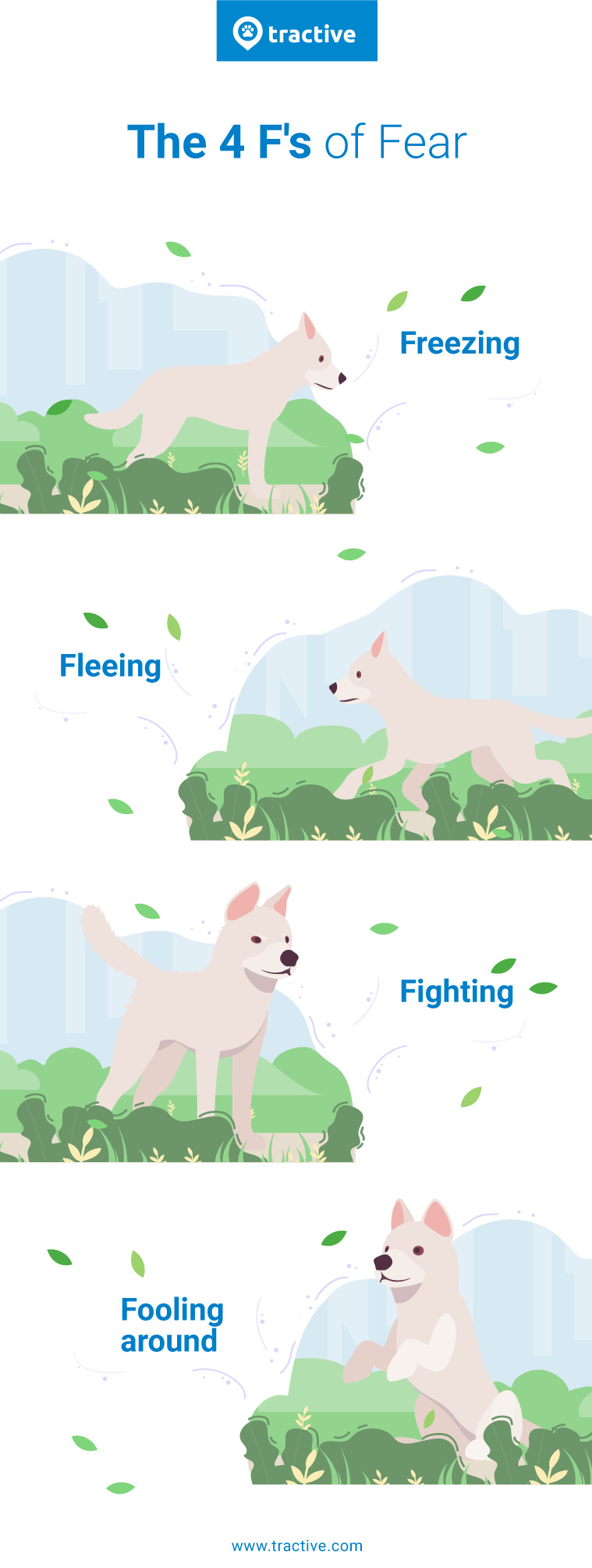
Read more: Why Is My Dog Scared Of Everything? Our Expert’s Take
8. Prepare for the unexpected
Finally, keep in mind that there are likely other factors you need to consider on your personal nighttime dog walks.
- Beware of ice-melting salts that can be dangerous for your dog’s paws.
- Is dognapping on the rise in your area? Then don’t let your dog out of your sight.
- Choose a walking path that is safe, well-lit, and dog-friendly. Stay alert – surprises such as other people and dogs, cars, cyclists, or wild animals might greet you unexpectedly.
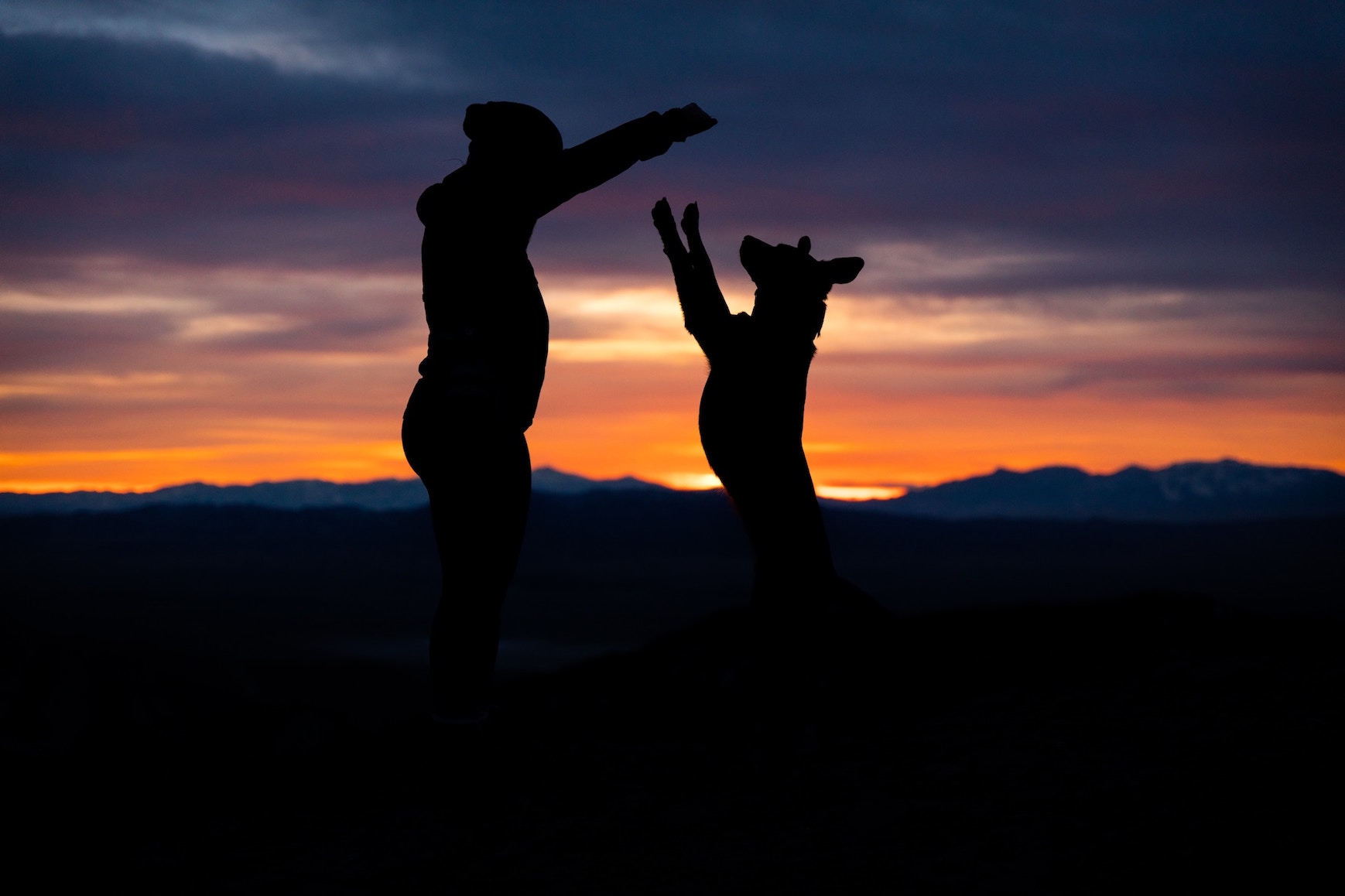
⚠️ Is there a frozen lake nearby? Then keep your dog close. Else, your buddy’s weight might end up with them crashing through – like Imogen the Borzoi, pictured here with her Tractive device.
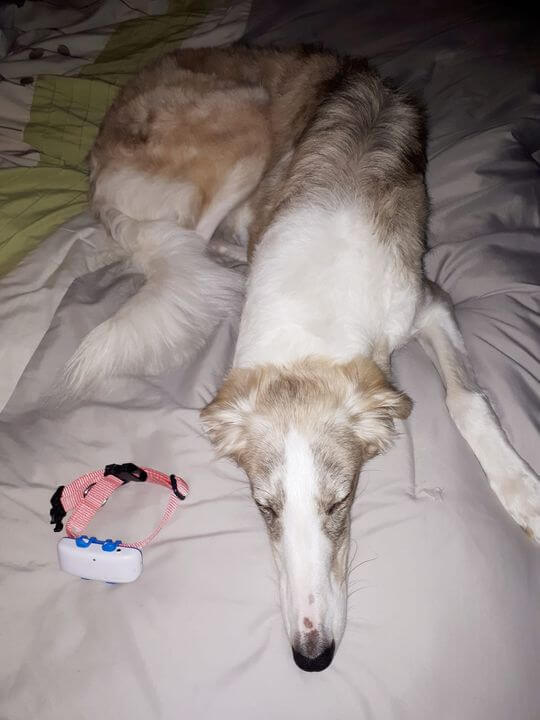
Luckily, Imogen’s mom was able to track her down with her Tractive device’s Heat Map and Location History – saving her from drowning and freezing.
Read more: Imogen The Dog Saved From Frozen Lake Thanks To GPS Tracker
Ready to have a safe nighttime walk with your buddy?
Walking your dog at nighttime can be both fun and frightening all in one. But with a little planning and prep, you can 100% take them for your daily walk – no matter if the sun sets at 2 PM or later.
Here are a couple of safety tips to get you started.
- Never leave home without your buddy’s ID tag and collar. A microchip works even better, since all these items can help someone identify you as your dog’s owner in case they get lost.
- A neutered/spayed dog is less likely to bolt off in the dark to sniff out their paw-fect mate. Your vet can best advise you whether this is a good option for your buddy.
- An extra strong leash and harness can be a lifesaver. Look up your local laws on whether these are a requirement (including whether your dog needs a muzzle.)
- Basic obedience training commands can help your dog stop chasing down a squirrel or bolting off in fear. Don’t skip out on these under any circumstances!
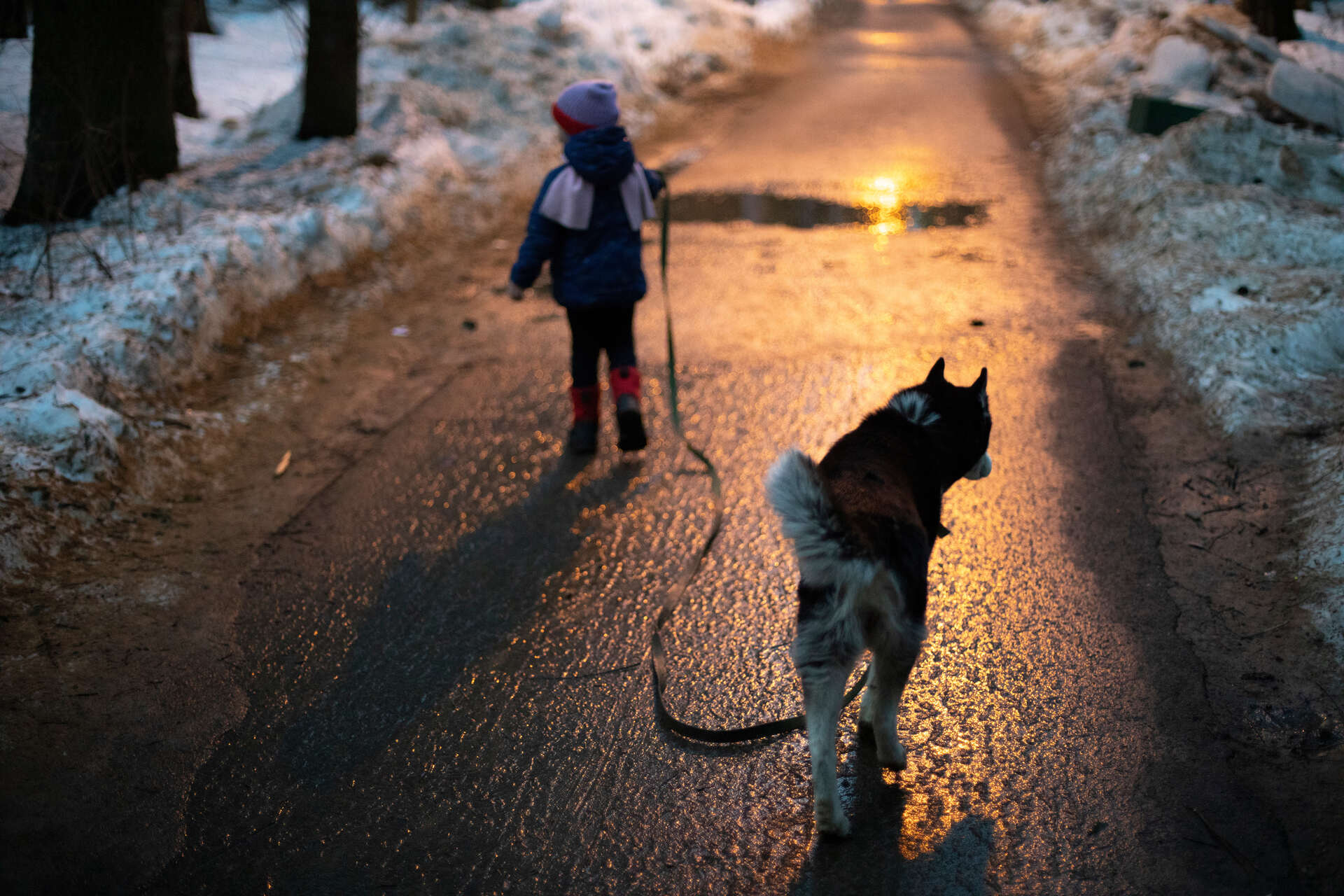
- Dress for high visibility with reflective gear or a head lamp. This can help prevent accidents in the dark, especially from passing vehicles.
- Plan for the weather by getting your buddy a warm jacket or dog booties for the colder months.
- Keep an eye out for any signs of fear in your dog, whether from passing cars or other animals. In the dark, even warmly-dressed strangers can look frightening!
- Plan ahead for your route by ideally picking one that’s well-lit, safe, and easy on your dog’s paws.
🐶 And if you’ve got a dog that’s an escape artist, a budding hunter, a ball of energy, or just needs to stick their nose into everything…
Then why take a chance on their safety?
Rather, with a Tractive device strapped to their collar, you’ve now got the peace of mind you can follow their every step – as they make their every step.
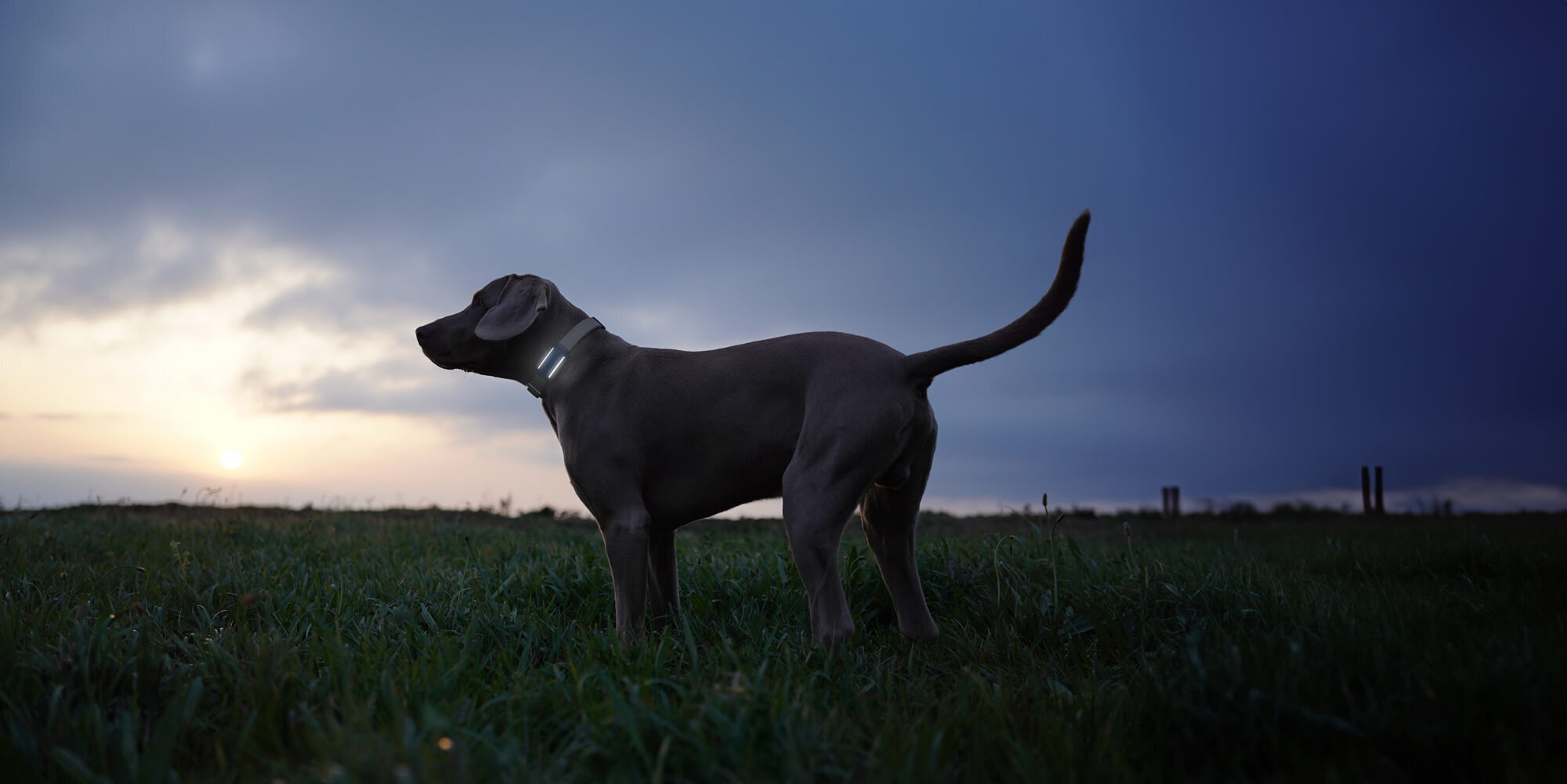
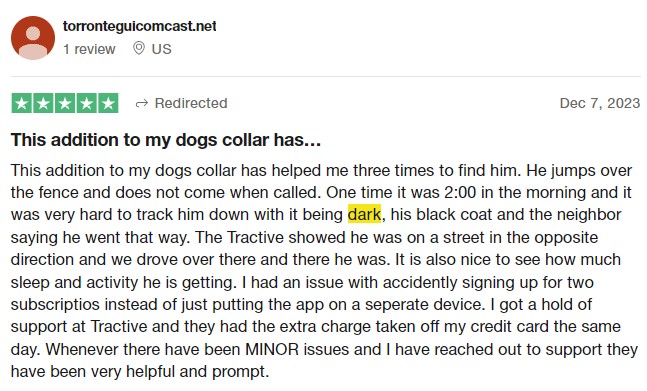
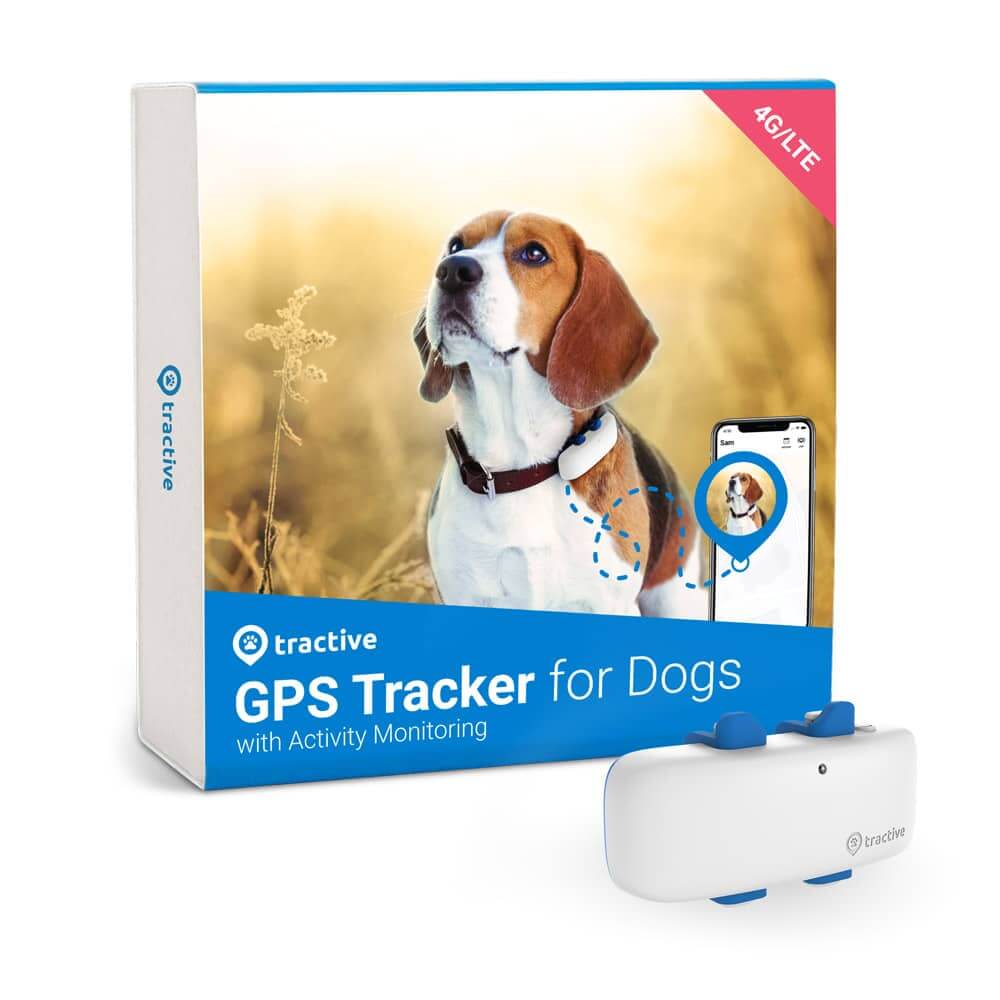
Always know where your dog is
Follow every step in real-time with unlimited range. Get alerts if they wander too far. Keep them happy & healthy with Wellness Monitoring. And let others – like walkers or sitters – keep an eye on your dog too.
Want to see the Tractive GPS in action? Here’s a short, sweet video that covers everything you need to know – in just over 2 minutes.
And if you’ve liked this post, share it with a friend or a loved one – and let’s help build a safer, kinder world for our furry friends together.


